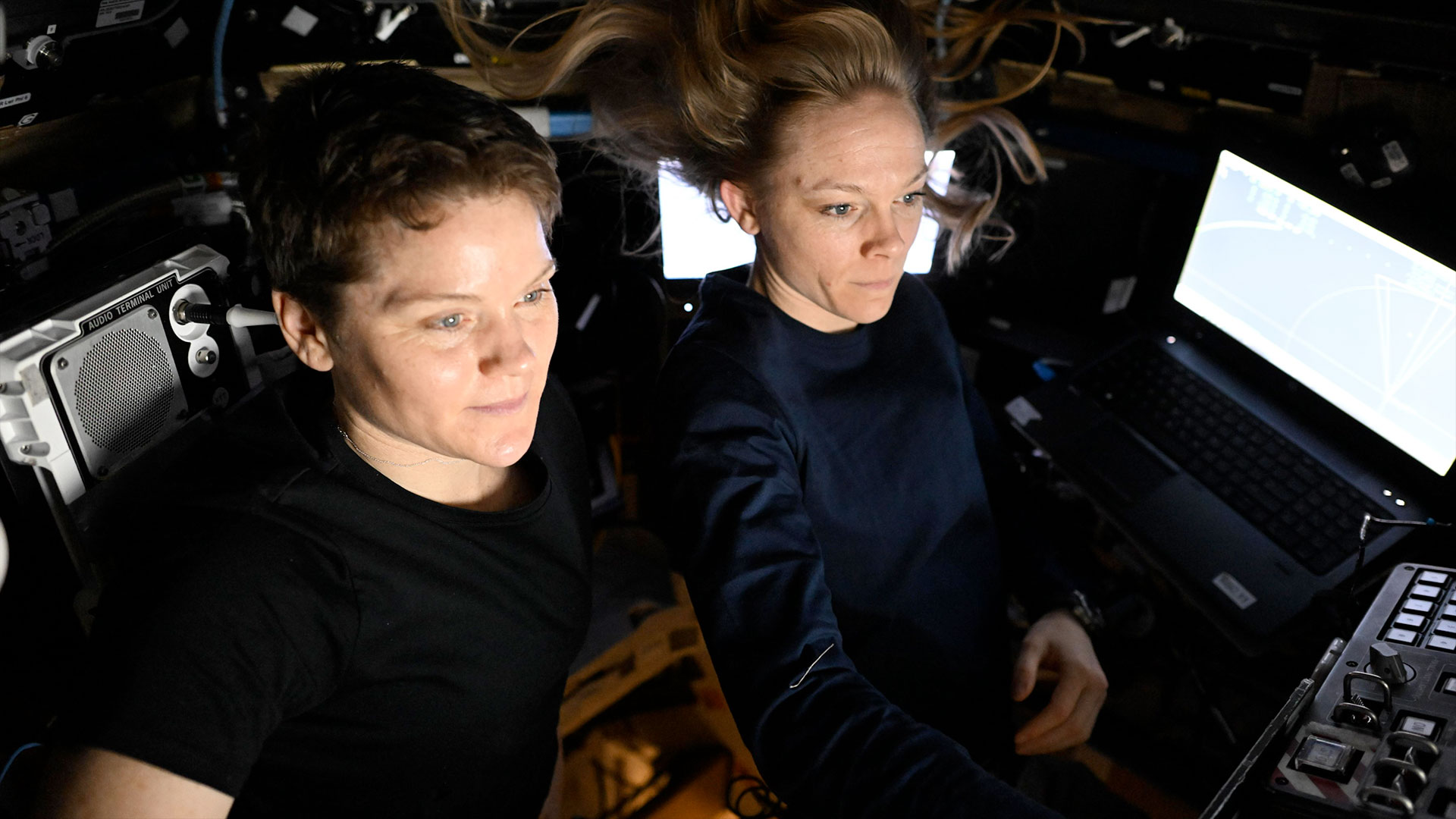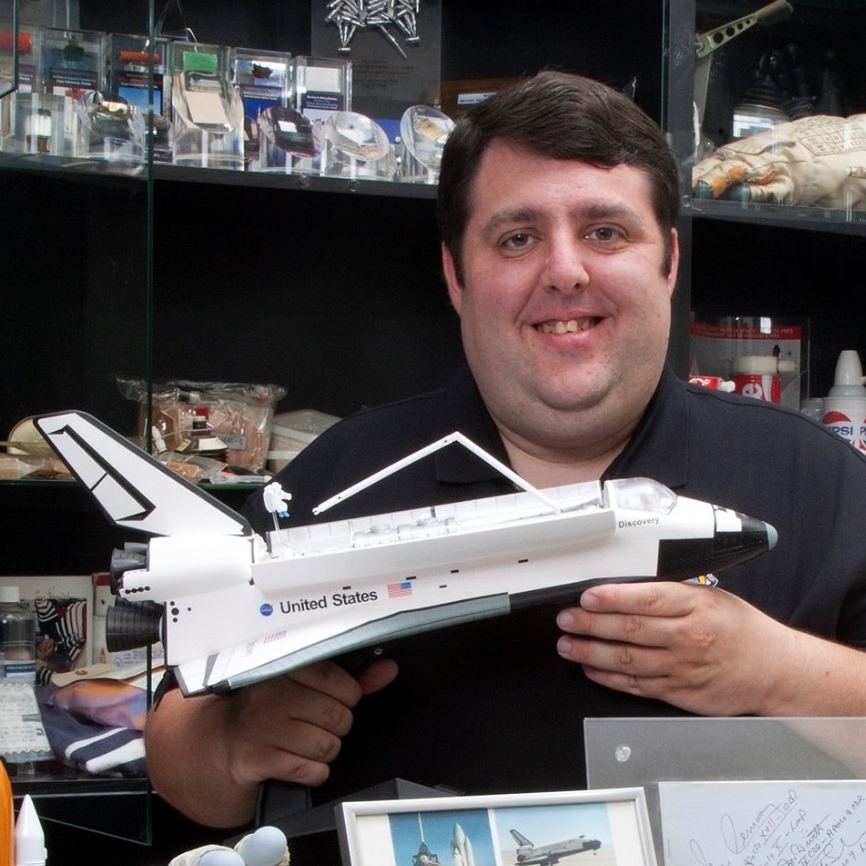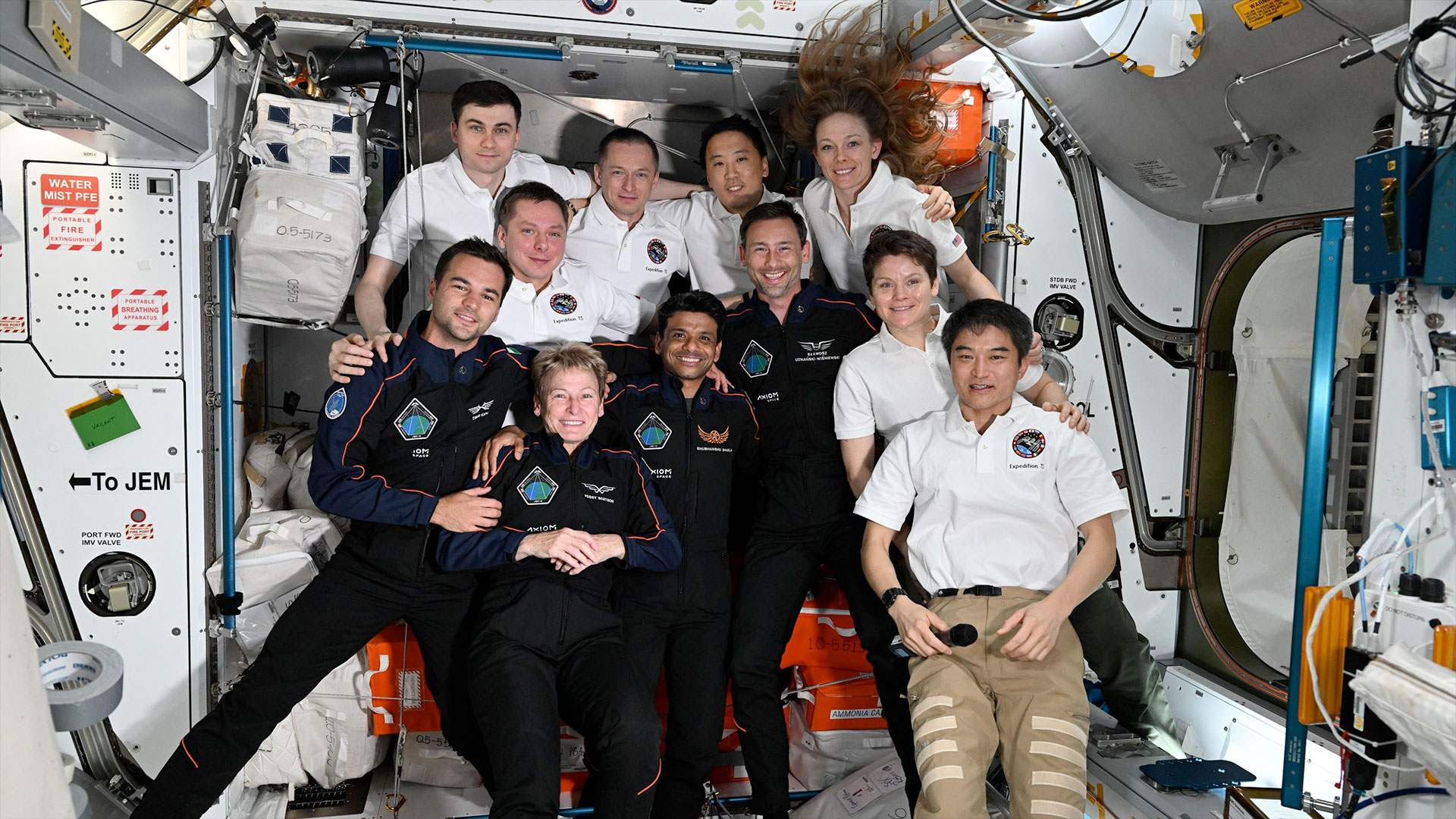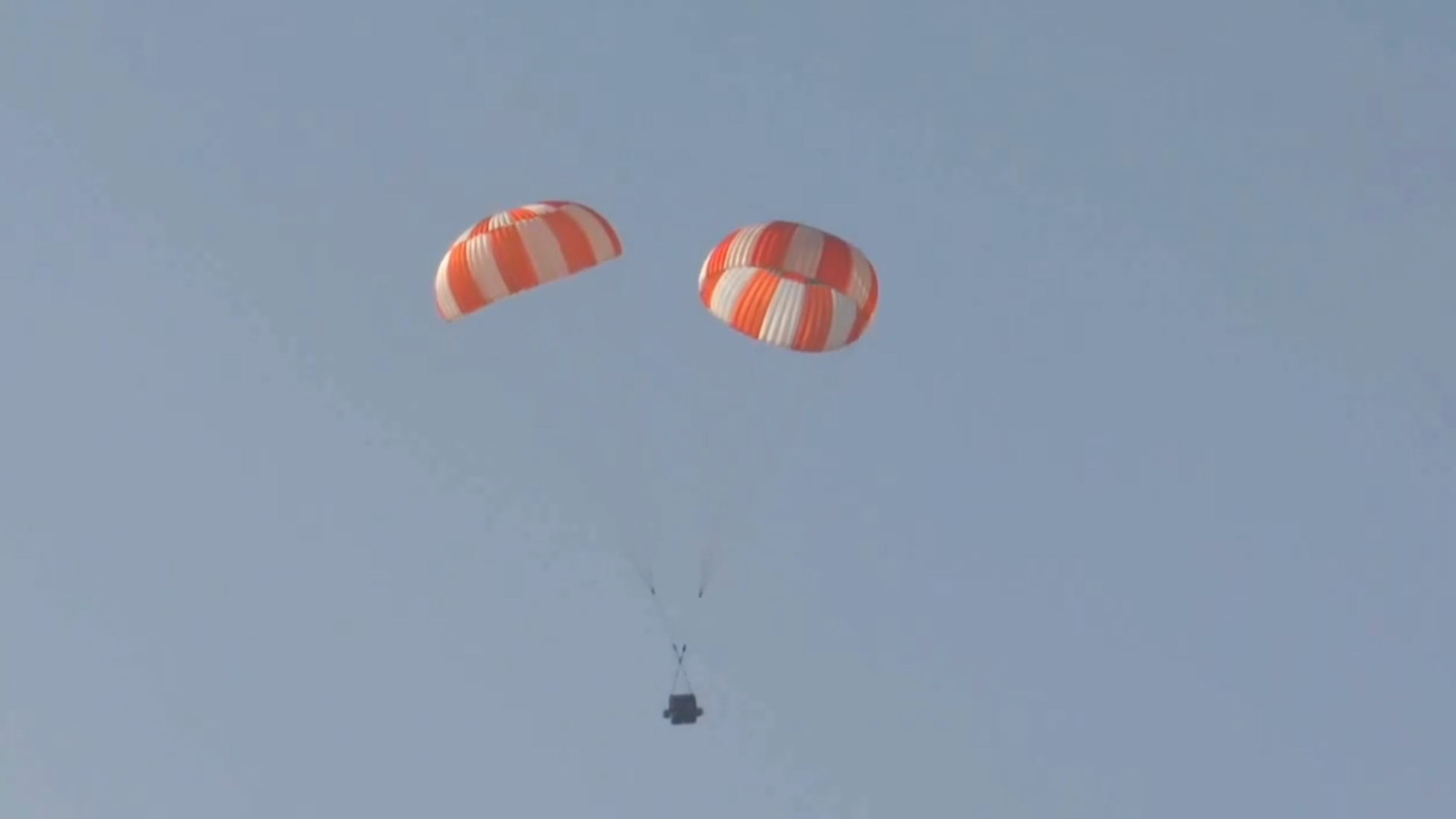The ups and downs of life in space | On the ISS this week June 23 - 27, 2025
A look back at the week's activities for the Expedition 73 and Axiom Mission 4 crews.

They have arrived! After an extended delay, the Axiom Mission-4 (Ax-4) crew flying aboard SpaceX's Crew Dragon "Grace" pulled up to the International Space Station and docked, beginning a two-week stay on the orbiting laboratory. Meanwhile, science and maintenance work continued this week for the Expedition 73 crew.
Orbital observation
In space, what goes up ... doesn't really matter to our brains.
"I think one of the most surprising or unexpected things is just how quickly your brain figures out that up and down doesn't really matter," said Nichole Ayers, Expedition 73 flight engineer, answering one of the questions the young students at P.S. 71 Forest Elementary School in Ridgewood, New York on Monday (June 23). "You know, on Earth, we've got gravity, and it pulls us down, and so we know where the floor is, but here on the space station, somebody could be upside down, and you could be talking to them like normal."
It was at this point in the video downlink that fellow NASA astronaut Anne McClain flipped upside down (in relation to Ayers' orientation).
"You know, our treadmill is on the wall, so is our lifting machine. And so it's pretty often that you turn around the corner and someone is not exactly like you would expect them to be, but your brain, after a couple weeks, just kind of goes, 'Okay, we can do this.' And you figure out that you can go through a module upside down, you can go through a module doing multiple aileron rolls, and your body is totally okay with that."
Science status
Among the research that was conducted by the Expedition 73 crew aboard the space station this week was:
Thigh Cuff — Expedition 73 commander Takuya Onishi and flight engineer Jonny Kim took turns wearing tight cuff on their legs in an effort to change the direction of the fluids in their body. In the weightless environment in space, fluids tend to pool up in the head, which can have negative effects. The two astronauts, working inside the European Columbus Laboratory, used an ultrasound device to monitor the effectiveness of the cuff.
Breaking space news, the latest updates on rocket launches, skywatching events and more!
Ring Sheared Drop — Continuing a multi-week fluids physics experiment, Nichole Ayers worked with an apparatus mounted inside a microgravity glove box in the U.S. Destiny Laboratory to see if surface tension can be used to isolate liquids from their containers' walls. The research could lead to advancements in formulating pharmaceuticals, among other applications.
Bio-Analyzer — Anne McClain activated this device, which allows for the on-orbit qualification of cellular and molecular samples collected aboard the space station.
Roscosmos cosmonauts Sergey Ryzhikov and Alexey Zubritskiy measured the flow through their large and small blood vessels, while Kirill Peskov checked the radiation levels on board the space station.
Station keeping
The Expedition 73 crew also devoted time to maintaining the space station's systems, including:
Day in the Life — Onishi, Kim and Ayers filmed training videos for future station crew members. They showed where spacesuits and EVA tools are stored in the Quest airlock, where safety equipment is located in the Harmony, Kibo and Columbus modules and typical crew activities in the Tranquility module, Cupola and Leonardo permanent multipurpose module (PMM).
Stowage space — Speaking of the PMM, McClain and Onishi rearranged cargo in the station's "storage closet," with the aim of making more room for more items to be moved inside. They then documented their work in photos for Mission Control to analyze.
Ryzhikov worked on the Russian segment's Elektron oxygen generator and Zubritskiy swapped out ventilation dust filters.
Astronaut activity
And then there were 11.
The Axiom Mission-4 crew arrived at the International Space Station on Thursday, June 26, 2025. Commander Peggy Whitson, pilot Shubhanshu Shukla of the Indian Space Research Organization (ISRO) and mission specialists Sławosz Uznański-Wiśniewski of the European Space Agency (ESA) and Tibor Kapu of the Hungarian to Orbit (HUNOR) astronaut program have joined the Expedition 73 for a two-week stay.
The international Ax-4 crew will set a record for the most research conducted on an Axiom Space mission to date. They have with them more than 60 experiments and technology demos from 31 countries, including the crew members' nations, as well as Saudi Arabia, Brazil, Nigeria and the United Arab Emirates.
Axiom Mission 4 (Ax-4)
The fourth commercial mission to the International Space Station as organized by Houston-based Axiom Space saw the arrival of the first citizens of India, Poland and Hungary aboard the orbiting outpost.
Led by Peggy Whitson, a former NASA astronaut who holds the record for the most time in space by an American (and a woman worldwide), Shubhanshu "Shux" Shukla, Sławosz "Suave" Uznański-Wiśniewski and Tibor Kapu spent their first couple of days becoming familiar with the layout of the station after docking on Thursday (June 26).
With the seven members of Expedition 73 already taking up the established sleep stations, the Ax-4 crew have set up camp where space was available: Whitson in the Quest airlock, Shukla in Dragon, Uznański-Wiśniewski in Columbus and Kapu in Kibo.
By the numbers
As of Friday (June 27), there are 11 people aboard the International Space Station: Expedition 73 commander Takuya Onishi of JAXA, Anne McClain, Nichole Ayers and Jonny Kim of NASA and Kirill Peskov, Sergey Ryzhikov and Alexey Zubritsky of Roscosmos, all flight engineers, as well as Axiom Mission 4 (Ax-4) commander Peggy Whitson, pilot Shubhanshu Shukla of the Indian Space Research Organization (ISRO) and mission specialists Sławosz Uznański-Wiśniewski of the European Space Agency (ESA) and Tibor Kapu of the Hungarian to Orbit (HUNOR) astronaut program.
There are three docked crew spacecraft: SpaceX's Dragon "Endurance" attached to the forward port of the Harmony module, Dragon "Grace" on the space-facing port of Harmony and Roscosmos' Soyuz MS-27 attached to the Earth-facing port of the Prichal node.
There are also two docked cargo spacecraft: Roscosmos' Progess MS-29 (90P) attached to the space-facing port of the Poisk module and Progress MS-30 (91P) attached to the aft port of the Zvezda service module.
As of Friday, the space station has been continuously crewed for 24 years, 7 months and 26 days.

Robert Pearlman is a space historian, journalist and the founder and editor of collectSPACE.com, a daily news publication and community devoted to space history with a particular focus on how and where space exploration intersects with pop culture. Pearlman is also a contributing writer for Space.com and co-author of "Space Stations: The Art, Science, and Reality of Working in Space” published by Smithsonian Books in 2018.
In 2009, he was inducted into the U.S. Space Camp Hall of Fame in Huntsville, Alabama. In 2021, he was honored by the American Astronautical Society with the Ordway Award for Sustained Excellence in Spaceflight History. In 2023, the National Space Club Florida Committee recognized Pearlman with the Kolcum News and Communications Award for excellence in telling the space story along the Space Coast and throughout the world.
You must confirm your public display name before commenting
Please logout and then login again, you will then be prompted to enter your display name.


